Consider an optical medium where refractive index varies linearly with height i.e. where is a positive constant and is the height above the ground level. Here positive number is the refractive index at the ground level. The refractive index at height varies with temperature at that point as constant. Consider a ray propagating (in a plane) in the medium which is horizontal at the ground level (i.e. at grazing angle) and makes an angle with horizontal at height as shown in the figure. Use small angle approximation i.e. keep only terms upto and including quadratic order in all trigonometric functions. Select the correct option(s).
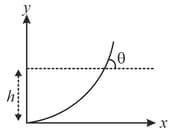

Important Questions on Optics
Electromagnetic waves emanating from a point (in air) are incident on a rectangular block of material and emerge from the other side as shown below. The angles and are angles of incidence and refraction when the wave travels from air to the medium. Such paths for the rays are possible,
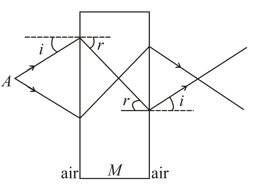
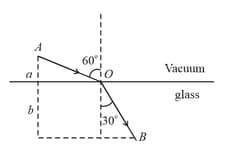
Consider a plane parallel beam of light incident on a plano-cylindrical lens as shown below. Which of the following will you observe on a screen placed at the focal plane of the lens?
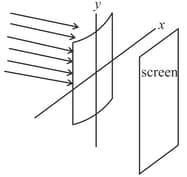
The sun appears orange red at sunrise and sunset. This is because of
A long horizontal mirror is next to a vertical screen (see figure). Parallel light rays are falling on the mirror at an angle from the vertical. If a vertical object of height is kept on the mirror at a distance The length of the shadow of the object on the screen would be.
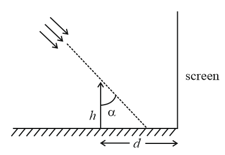
From a prism of refracting angle , the angle of minimum deviation is . Calculate:
the angle of refraction
An observer can see through a small hole on the side of a jar (radius ) at a point at height of from the bottom. The hole is at a height of . When the jar is filled with a liquid up to a height of the same observer can see the edge at the bottom of the jar. If the refractive index of the liquid is , the value of is:
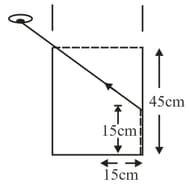
Find the value of the angle of emergence from the prism. Refractive index of the glass is .
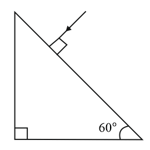
"When monochromatic light is incident on a surface separating two media, the reflected and refracted light both have same frequency as incidence frequency" Is this statement is true? If yes. why? If you think it is not true, why>
Back surface of a glass (refractive index and thickness ) is polished to work as a mirror as shown below. A laser beam falls on it and is partially reflected and refracted at the air-glass interface and fully reflected at the mirror surface, respectively. A pattern of discrete spots of light is observed on the screen.
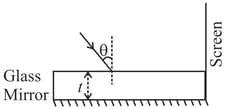
The spacing between the spots on the screen will be

